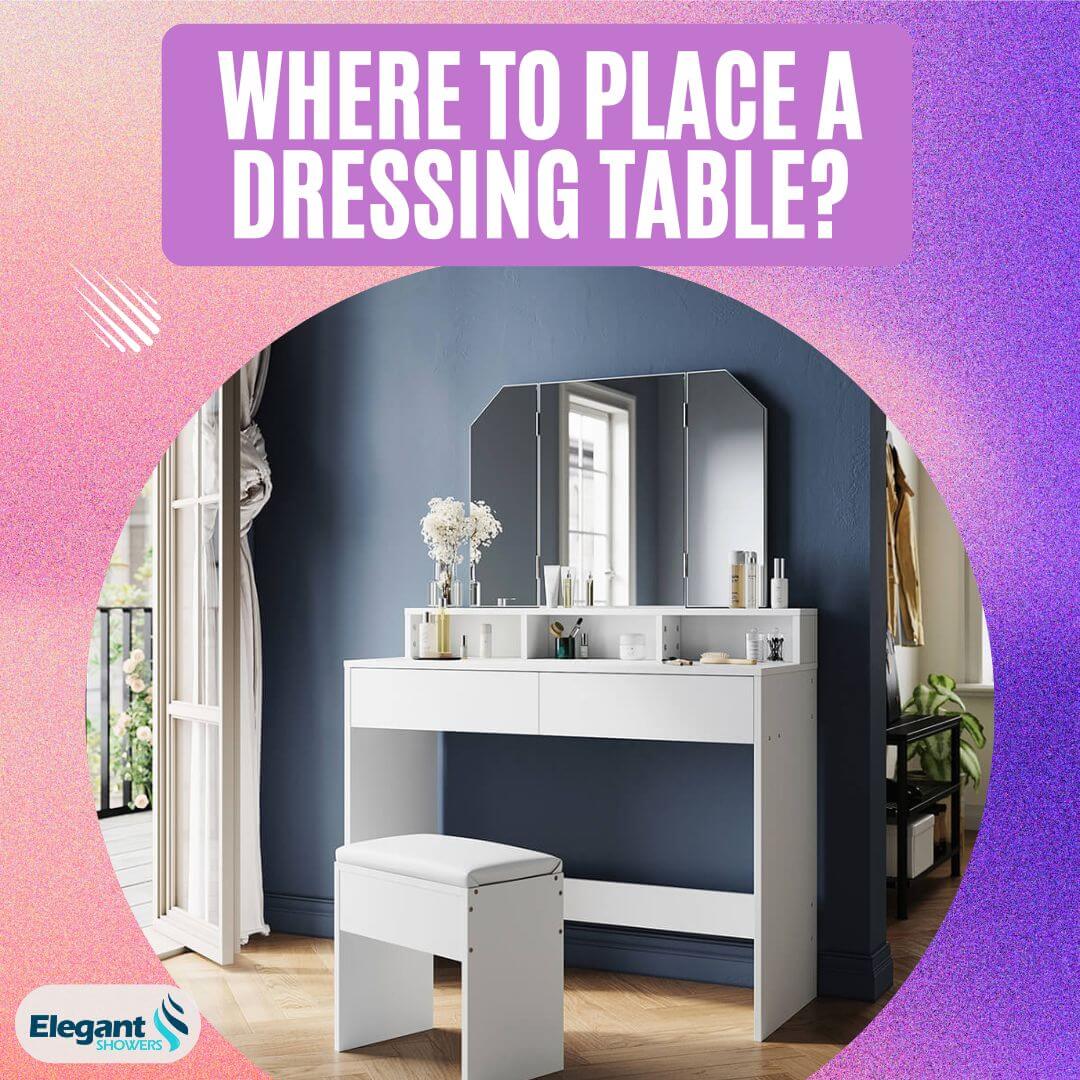A dressing table is an essential piece of furniture for many bedrooms. It provides a dedicated space to apply makeup, style your hair, store beauty products, and get ready for the day. When incorporating a dressing table into your bedroom design, placement is key for both aesthetic appeal and functional use. There are 7 prime spots to consider when deciding where to locate your dressing table:
1. Near a Window
Situating your dressing table next to a window is ideal for both practical and visual reasons. Quality lighting dressing table is crucial when applying makeup and styling hair. Natural light from a window eliminates shadows on your face, allowing you to perfect every detail of your look. The ample brightness enables you to accurately match foundation tones, blend eye shadows, and tweak hairstyles. If the window supplies sufficient lighting all day, you likely won't need supplementary lighting.
Positioning the dressing table perpendicular to a window prevents the light from shining directly into your eyes or casting shadows across your features. Angling the table allows the light to illuminate your face indirectly for optimal visibility. Try placing the window on your left for the best vantage point.
In addition to functional lighting benefits, a window supplies charming views while you glam up for the day. Gazing out at lush landscapes or city scenes makes your morning primping routine more pleasant and peaceful. The natural light and views also contribute to the overall ambiance of the bedroom.
2. Near the Bedroom Door
For those who share a bedroom, placing the dressing table near the door offers needed privacy for applying makeup. Doing your makeup while your partner sleeps can cause frustration or interruption. Situating your table out of your partner's sightline allows you both to carry on your morning routines without disturbance.
The door location also discourages others from entering the mid-makeup application. Having people pop in to ask questions or discuss plans can disjoint your focus. The subtle barrier created by the dressing table signals when you are not to be disturbed during your self-care rituals.
An adjacent wall from the door works well so the door can fully open without obstruction. Face the door so you can see when someone is about to enter and request privacy. Having your back to the door risks someone walking in unnoticed.
3. Near Both Bedroom Doors for Families
For parents sharing a room adjacent to a kids' room, placing the dressing table near both doorways allows you to monitor kids while getting ready. You can easily call out reminders about homework, chores, and packing backpacks while applying makeup at your table. Keeping within earshot of both rooms helps you coordinate hectic school-day mornings.
Facing the interior bedroom door also lets you quickly react if younger children need assistance. Seeing them enter immediately if hurt, sick, or crying enables you to attend to them without delay. For older kids, the visibility reminds them to be independent in the mornings rather than interrupting.
4. Along a Shared Wall
If noise pollution is a concern within your home, situating your dressing table against a shared wall risks disturbing housemates and neighbors. Tasks like blow drying hair, running straighteners through locks, and hammering nails can permeate walls and disrupt light sleepers. Opt for placement along a party wall only if sound transmission is low between rooms.
Likewise, placing the table beside a shared wall invites noise infiltration from surrounding areas. Televisions, music, running water, and chatter can break your concentration while applying elaborate makeup looks. For uninterrupted focus, position your table far from common living spaces.
Create distance from shared walls housing bedrooms, home theaters, laundry rooms, family areas, and music rooms. Prioritize locations offering acoustic privacy so you can prepare for the day in peace.
5. In a Dedicated Dressing Room
For large master bedrooms, consider defining a dedicated dressing room zone. This private space allows ample room for a dressing table, storage furniture, jewelry displays, and a full-length mirror. Having an independent area to get ready prevents confined quarters and allows comfortable seating distances between His-and-Her tables.
Building custom organizational systems into a dressing room also de-clutters the main bedroom. Containing beauty tools, accessories, and products to the dressing room maintains tidy bed and nightstand surfaces. The separate area helps distinguish sleep space from functional space.
Position the dressing table near supply storage so all items are easily accessible while preparing makeup and hair. Place everyday products on the tabletop or shelves directly above to minimize reaching. Install slim drawers or cubbies nearby for backup tools and seasonal products.
The customization flexibility of a built-in dressing room allows you to install task lighting, electrical outlets, mirrors, and storage specific to your needs. And dressing behind an enclosed door prevents messy clutter from being visible to bedroom eyes.
6. Facing Away From Bedroom Entry
For studio apartments or single-room layouts, the entry door may be the only viable placement option. Situating the table opposite the apartment entryway promotes privacy. Passersby cannot view directly into the space, especially if placed against a wall with no windows.
Face the mirror toward the room's interior rather than outward. This prevents the reflective surface from showcasing you and your space to anyone entering. Keep the table perpendicular to the doorway so visitors only glimpse your back and side profile.
Using a decorative screen or curtains behind the table provides additional concealment. Choose colors and patterns that complement your décor while adequately covering the dressing area. Semi-opaque materials still allow light permeation from windows without clear visibility.
7. Corner of the Room
Tucking a petite table into the corner of a bedroom saves space while still allowing prep functionality. The tight fitment is ideal for compact rooms and apartments needing to conserve square footage. Using the corner real estate that may otherwise go wasted creates a perfect niche for single-occupant use.
The two adjacent walls also supply surfaces to mount wall-mounted storage, sconces, and slim mirrors. Install hanging racks, shelves, and medicine cabinets above to amplify vertical storage for beauty tools and cosmetics. Use the perpendicular walls to extend the tabletop space as well.
For natural lighting, select a corner near a window and situate the table diagonally. If window access is unavailable, ensure sufficient overhead lighting is installed. Ring lights, vanity strips, and recessed ceiling lights help brighten compact corner spaces.
As evidenced above, 7 options exist for integrating a dressing table area into your bedroom layout and design. From windows and doors to room corners and partitions, take advantage of the unique spatial opportunities supplied by your room's parameters. Analyze both practical needs like lighting and storage along with decorative goals for your bedroom's style. Locating your dressing table using these placement strategies helps launch productive and beautiful mornings.






